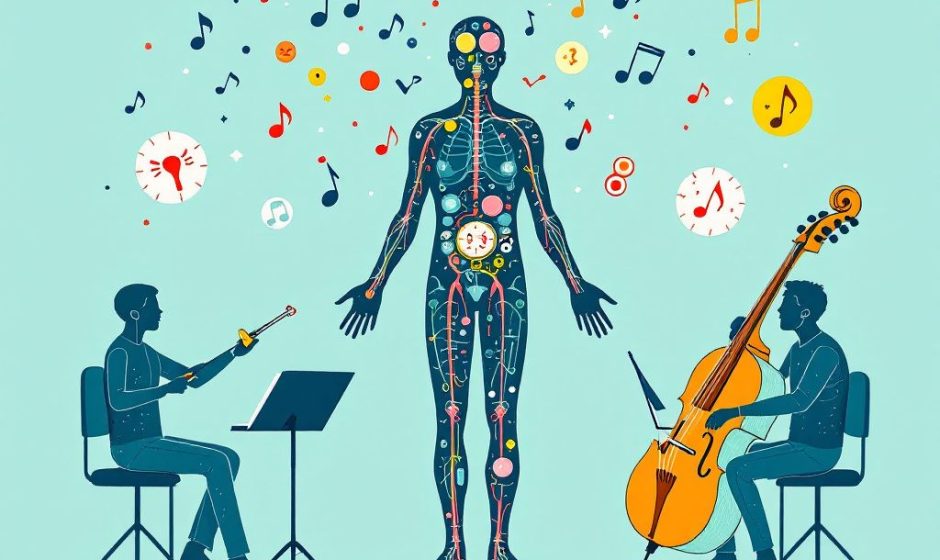So, let’s jump straight into the chaos, shall we? Understanding female hormones can feel like you’re trying to decode an ancient, mystical language. Seriously, just when you think you’ve got it, your body decides to throw in a plot twist. It’s not just about monthly cycles—these hormones regulate processes throughout your life, impacting everything from mood to metabolism. It’s a rollercoaster, folks, and like every great ride, it’s better when you know where it twists and turns.
The Hormone Orchestra
Imagine your body as an orchestra with a bunch of different instruments, aka hormones, each playing its role. Sometimes they’re in perfect harmony and at other times, well, they’re not. The main players are estrogen, progesterone, and a sidekick or two like testosterone, cortisol, and thyroid hormones.
Estrogen: The Leading Lady
Think of estrogen as the diva of the hormonal world. It’s primarily responsible for shaping the female reproductive system and influencing sexual development during puberty. Estrogen levels fluctuate, rising before ovulation and falling afterwards. Fun times, right?
When you have too much estrogen, things can get tricky. There’s bloating, mood swings, and sometimes headaches. On the flip side, low estrogen might mean hot flashes and maybe a bit of grumpiness. It’s a delicate balancing act.
Progesterone: The Calm Creator
If estrogen is the lead, progesterone acts as the peacemaker, calming things down post-ovulation. It’s all about preparing the uterus for a potential pregnancy and signaling that it’s relaxing time after ovulation. There’s a reason why this hormone is often called the ‘relaxation hormone’—it helps nurture a sense of calm and improve sleep.
Low levels of progesterone can lead to an excess of estrogen, resulting in symptoms such as anxiety, headaches, and yes—the occasionally dreaded sore breasts.
Testosterone: The Not-So-Secret Agent

Betcha didn’t think testosterone would pop up here, huh? Well, it does, albeit in smaller amounts. This hormone keeps our libido in check and helps with muscle and bone strength. Too much of it? Expect breakouts and hair issues.
Life Stages and Hormonal Changes
Hormones aren’t just doing their dance within one monthly cycle—they play a role through different stages of life. Here’s a crash course:
Puberty: The Debug Mode
Puberty is like your body hitting a software update. Estrogen, progesterone, and a bunch of growth hormones kick in to start changes—breast development and menstruation. It’s a time of greasy hair and emotional roller coasters that often hit out of nowhere.
Menstrual Cycle: Monthly Rhythm
The menstrual cycle is essentially your body getting ready for baby possibilities. It’s a roughly 28-day run through phases of menstruation, follicular, ovulation, and luteal. Here’s something handy:
| Phase | Duration | Key Players |
|---|---|---|
| Menstruation | 1-7 days | Low estrogen/progesterone |
| Follicular | 8-14 days | Rising estrogen |
| Ovulation | 14-15 day | Peak estrogen, Luteinizing Hormone |
| Luteal | 16-28 days | High progesterone |
Understanding these phases can be a real game changer. Whether you’re trying to conceive or manage your symptoms better, it’s like getting VIP access to your own health files.
Pregnancy: The Power Surge
Oh boy, pregnancy is a ministerial cabinet reshuffle in your hormone world. Human chorionic gonadotropin (hCG) surges to sustain early pregnancy, supporting the production of progesterone and estrogen. These levels stabilize but are significantly higher than usual, supporting fetal development.
Menopause: The Gradual Transition

Menopause isn’t an overnight thing—it’s a progressive reduction in the hormones side of your symphonic body. Estrogen and progesterone levels start dipping, leading to the infamous hot flashes, mood swings, and changes in metabolism.
Hormones Out of Balance: Hits and Misses
Ever feel like things are a little off? Hormonal imbalances happen when there’s too much or too little of a hormone circulating. So, what do these imbalances look like?
Common Symptoms
- Mood Swings: Feel like you’re catching feelings from a soppy movie for no particular reason? Could be a hormone thing.
- Weight Changes: Sudden weight gain (or loss) might not just be diet-related.
- PMS from Hell: When it’s severe or prolonged, a closer look at hormone levels might be in order.
- Fatigue: Not just tired—it’s more like a truck ran over you repeatedly tired.
Causes of Imbalance
Eating habits, stress levels, our good old friend genetics, or even just your daily skincare routine can impact your hormones. Life has a way of sneaking ingredients into the brew that can send them into a spin.
Strategies for Keeping Hormones Happy
Let’s slide into what you can actually do—since that’s more up our alley of reality. Here are tried-and-true suggestions that might just make things a tad easier.
Diet: Fuel the Balance
Food affects mood and hormones too. Consider a diet low in sugar and refined stuff, and rich in whole foods and fiber. Trust me on this one, fiber is a ninja at balancing blood sugar levels.

Stay Hydrated: Water is Essential
Seems simple, but staying hydrated can help hormones communicate better throughout your body. It’s like oiling up a complicated machine.
Exercise: Move That Body
Exercise isn’t just a muscle-booster; it gets those feel-good chemicals flowing. Balancing cortisol and insulin can also help keep other hormones in line.
Sleep: Catch Those Zzz’s
Quality sleep is a goldmine for hormone regulation. Going to bed and waking up at consistent times can help set a rhythm for you and your hormones.
Stress Reduction: Do What Works for You
Everyone has a unique method to de-stress. Meditation, a long walk, or curling up with a book—whatever it is, stick to it. Chronic stress throws a big wrench in our hormonal world.
Natural Supplements and Herbs
Certain supplements such as omega-3 fatty acids, magnesium, and vitamin D3 can support hormone balance. Trust me, though, chatting with a healthcare pro before diving into supplements is always smart.
Final Thoughts
Understanding female hormones isn’t about getting all the answers or having textbook-perfect knowledge. It’s about knowing what’s gonna help and what’s not. We’re all unique in our hormonal fluency, and that is perfectly fine. It’s a complex field, but with a little understanding, you will ride those waves, rather than being knocked down by them. So yeah, let’s embrace the ebb and flow, even if sometimes it feels more like a roaring tide.
Frequently Asked Questions
What are the benefits of using a hair mask in my hair care routine?
Using a hair mask can provide several benefits, including hydration, smoothing, strengthening, curl definition, heat protection, and damage repair. Hair masks infuse the hair with moisture, help coat the hair shaft to seal split ends, reduce breakage, and protect the hair from heat styling and environmental damage[1][4].
What ingredients should I look for in a hair mask?
Effective hair masks often include ingredients such as coconut oil, argan oil, shea butter, honey, avocado oil, green tea, and coconut water. These ingredients provide nourishment, moisturize, and protect the hair, offering benefits like softening, moisturizing, and protecting against damage[2][5].
How often should I use a hair mask in my routine?
You should use a hair mask whenever your hair feels dry, unmanageable, or in need of intense hydration. This can vary depending on your hair type and needs, but generally, using a hair mask once or twice a week can help maintain healthy and moisturized hair[1][4].
How do I apply a hair mask for the best results?
To apply a hair mask effectively, shampoo your hair first, then apply the mask, focusing especially on the ends where hair tends to be the most damaged. Leave the mask on for anywhere from 10 minutes to overnight, depending on the type of mask and your hair’s needs[1][4].
References



